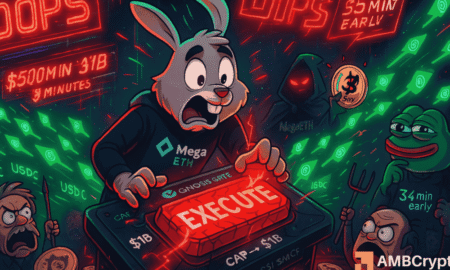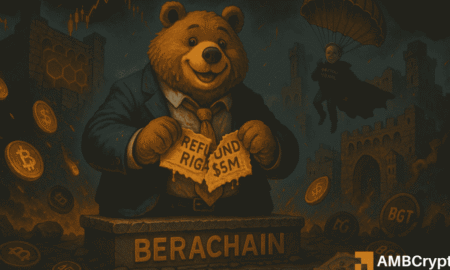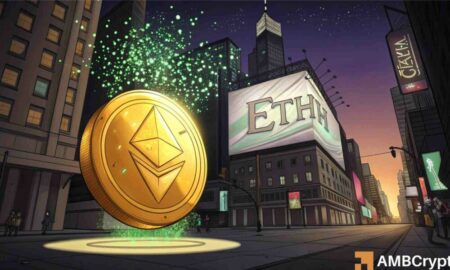The Rise of Altcoin ETFs: Are We Heading Towards an Altseason?
The introduction of altcoin Exchange-Traded Funds (ETFs) has sparked excitement in the cryptocurrency market, leading some analysts to speculate whether Wall Street may have unintentionally initiated an altseason. While notable cryptocurrencies like Solana (SOL), XRP, Hedera (HBAR), and Litecoin (LTC) are now being traded alongside traditional equities and bonds, the reality is more complex. This article explores whether altcoin ETFs will provide sustained momentum for these digital assets or merely serve as temporary trading instruments for institutional investors.
A New Dawn for Altcoins
Ethereum (ETH) was the first altcoin to make waves with its ETF debut, paving the way for others. However, the performance across various altcoins has been inconsistent. Solana has emerged as a frontrunner with impressive daily net inflows, often exceeding $60 million, bringing total assets up to $700 million. Despite a recent price dip, Solana has maintained strong inflow levels, indicating a solid demand from investors.
Conversely, XRP’s rollout attracted a lot of noise initially, leading to a peak inflow of around $240 million. While assets currently total about $384 million, the momentum has waned somewhat, causing a more tempered effect. Litecoin’s entry into the ETF arena has been quieter but arguably healthier; it has seen a steadier inflow trend that recently leveled off around $2 million, amounting to total assets of $7 million.
In stark contrast, HBAR experienced a significant initial spike with $45 million in the first week but has since struggled to maintain interest, tapering to near-zero inflows. This volatility underscores the unpredictable nature of inflows and the overall fragility of the ETF-driven momentum.
Institutional Interest in Altcoin ETFs
The growing embrace of altcoin ETFs by institutional investors is driven by their potential to transform the chaotic world of altcoins into manageable investment products. By providing a wrapped and regulated asset, these ETFs lower operational risks and satisfy compliance requirements for asset managers. This allows them to make more disciplined thematic bets, whether it’s on payment systems like XRP, high-throughput networks like Solana, enterprise solutions like HBAR, or alternative assets like Litecoin, often referred to as "digital silver."
Despite the potential for increased investments, it’s crucial to note that the market is not yet in a full risk-on mode. The Altcoin Season Index, which currently sits around 43, indicates that we’re in a transitionary phase, caught between euphoric altcoin trading and Bitcoin dominance. As ETF adoption continues to rise, the inflow dynamics may evolve, suggesting untapped growth potential if capital remains committed.
Risks of ETF-Induced Momentum
While the introduction of altcoin ETFs brings many advantages, it does not mitigate the inherent risks that altcoins carry. Presently, the appetite for altcoins remains muted. Historically, significant altseasons materialize only when the Altcoin Season Index surges into the 70-100 range. Given that we’re not even close to that threshold, the excitement surrounding ETFs could easily dissipate if performance does not match initial inflows.
An illustration of this precarious dynamic can be seen in HBAR, which peaked early but quickly lost its momentum. Such patterns emphasize the risks involved with ETF-driven capital, as institutional players may withdraw just as swiftly if returns falter.
Regulatory Considerations and Market Dynamics
A further layer of complexity surrounds altcoin ETFs: the regulatory landscape remains unpredictable. Altcoins often find themselves in a regulatory gray zone, meaning policy changes could drastically impact fund flows and market behavior overnight. ETFs provide no immunity from market structural risks, liquidity issues, or eventual shifts back to Bitcoin, which is still holding a significant market dominance.
As it stands, Bitcoin’s dominance has only marginally decreased from around 60.8% to approximately 59%. While this fluctuation shows some movement, it is insufficient to trigger a robust altcoin phase. Thus, while altcoins may gain easier access to institutional capital, weak networks still face severe challenges.
Implications of Altcoin ETFs on Market Perception
The emergence of multiple altcoin ETFs facilitates a broader acceptance of cryptocurrencies as legitimate financial instruments. This shift holds significant implications for the overall market, as it could attract fresh capital and instill a degree of predictability in the volatility that typically characterizes altcoins. Increased inflows into altcoins could also divert liquidity from Bitcoin, resulting in more dynamic market rotations rather than the traditional BTC-centrist rallies.
In essence, while the launch of altcoin ETFs is a promising step towards mainstream acceptance and perhaps an eventual altseason, they do not guarantee automatic success. It is crucial for investors to remain vigilant and monitor performance, as access alone may not be enough to establish enduring momentum.
Conclusion
In summary, altcoin ETFs represent a significant evolution in the cryptocurrency landscape, allowing institutional investors to navigate altcoins with reduced risk. The strong initial inflows into assets like Solana, XRP, and Litecoin highlight growing interest, yet the volatility and regulatory hurdles remain potent challenges. As we stand on the cusp of what could be an altseason, it is essential to approach this new frontier with caution; inflows must translate into sustainable performance for these altcoins to thrive. Ultimately, altcoin ETFs may lend legitimacy to this once-niche market, but their long-term success is contingent on robust demand and market stability.
















